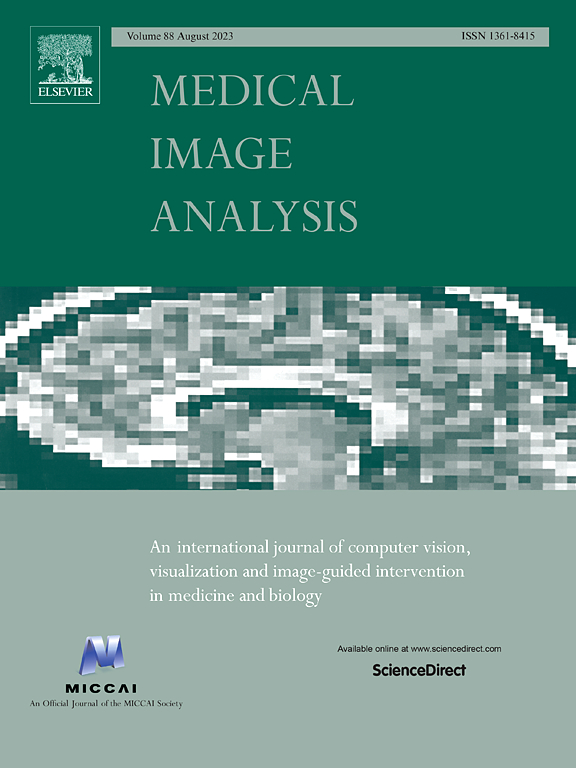Domain-specific information preservation for Alzheimer’s disease diagnosis with incomplete multi-modality neuroimages
IF 10.7
1区 医学
Q1 COMPUTER SCIENCE, ARTIFICIAL INTELLIGENCE
引用次数: 0
Abstract
Although multi-modality neuroimages have advanced the early diagnosis of Alzheimer’s Disease (AD), missing modality issue still poses a unique challenge in the clinical practice. Recent studies have tried to impute the missing data so as to utilize all available subjects for training robust multi-modality models. However, these studies may overlook the modality-specific information inherent in multi-modality data, that is, different modalities possess distinct imaging characteristics and focus on different aspects of the disease. In this paper, we propose a domain-specific information preservation (DSIP) framework, consisting of modality imputation stage and status identification stage, for AD diagnosis with incomplete multi-modality neuroimages. In the first stage, a specificity-induced generative adversarial network (SIGAN) is developed to bridge the modality gap and capture modality-specific details for imputing high-quality neuroimages. In the second stage, a specificity-promoted diagnosis network (SPDN) is designed to promote the inter-modality feature interaction and the classifier robustness for identifying disease status accurately. Extensive experiments demonstrate the proposed method significantly outperforms state-of-the-art methods in both modality imputation and status identification tasks.不完全多模态神经图像在阿尔茨海默病诊断中的领域特异性信息保存
尽管多模态神经图像对阿尔茨海默病(AD)的早期诊断有重要的推动作用,但在临床实践中,模态缺失问题仍然是一个独特的挑战。最近的研究试图对缺失的数据进行估算,以便利用所有可用的被试来训练稳健的多模态模型。然而,这些研究可能忽略了多模态数据中固有的模态特异性信息,即不同的模态具有不同的成像特征,关注的是疾病的不同方面。本文提出了一种基于多模态神经图像不完全诊断AD的特定域信息保存(DSIP)框架,包括模态输入阶段和状态识别阶段。在第一阶段,开发了特异性诱导生成对抗网络(SIGAN)来弥合模态差距并捕获模态特定细节,以输入高质量的神经图像。在第二阶段,设计特异性促进诊断网络(SPDN),以促进模态间特征的相互作用和分类器的鲁棒性,从而准确识别疾病状态。大量的实验表明,所提出的方法在模态输入和状态识别任务中都明显优于最先进的方法。
本文章由计算机程序翻译,如有差异,请以英文原文为准。
求助全文
约1分钟内获得全文
求助全文
来源期刊

Medical image analysis
工程技术-工程:生物医学
CiteScore
22.10
自引率
6.40%
发文量
309
审稿时长
6.6 months
期刊介绍:
Medical Image Analysis serves as a platform for sharing new research findings in the realm of medical and biological image analysis, with a focus on applications of computer vision, virtual reality, and robotics to biomedical imaging challenges. The journal prioritizes the publication of high-quality, original papers contributing to the fundamental science of processing, analyzing, and utilizing medical and biological images. It welcomes approaches utilizing biomedical image datasets across all spatial scales, from molecular/cellular imaging to tissue/organ imaging.
 求助内容:
求助内容: 应助结果提醒方式:
应助结果提醒方式:


